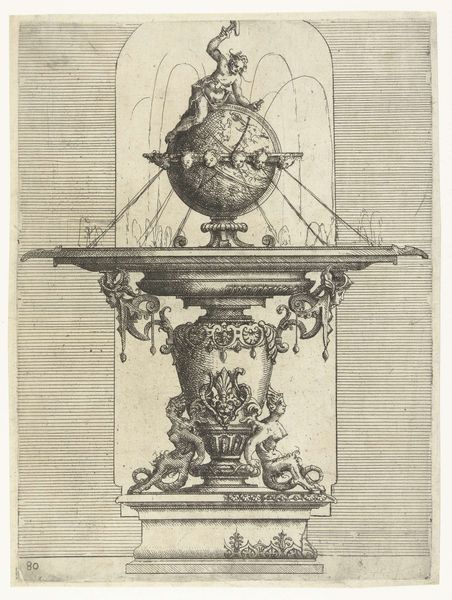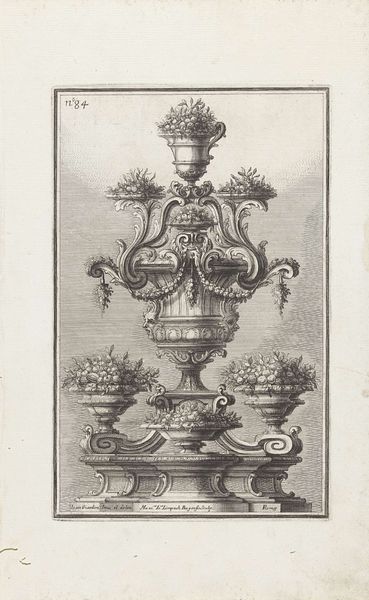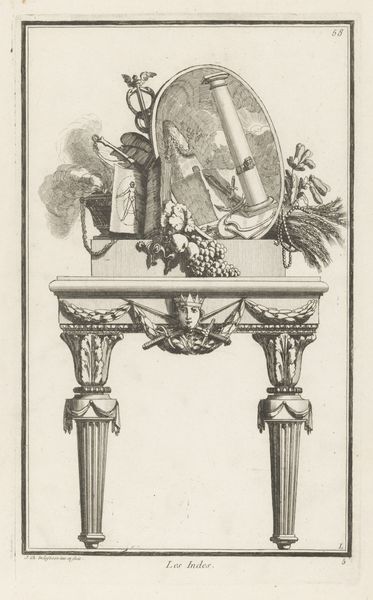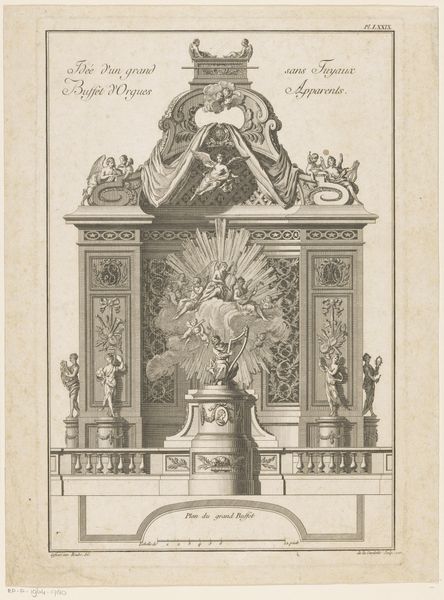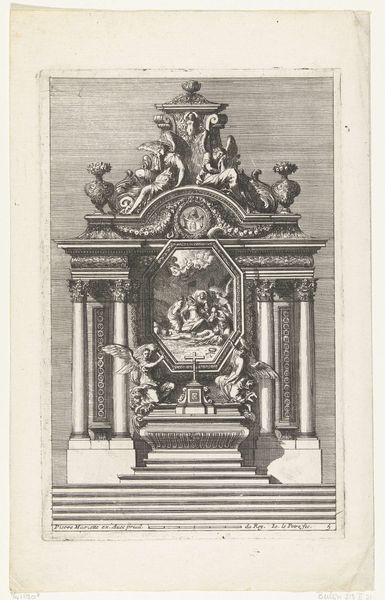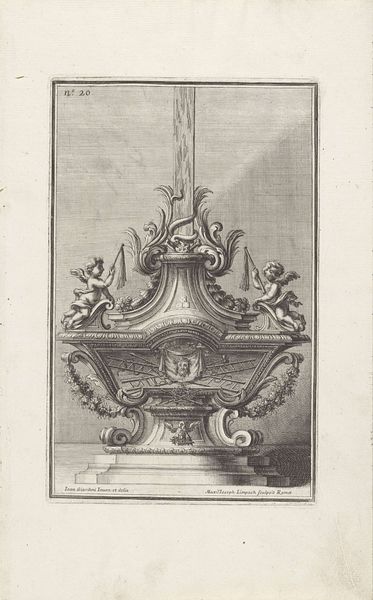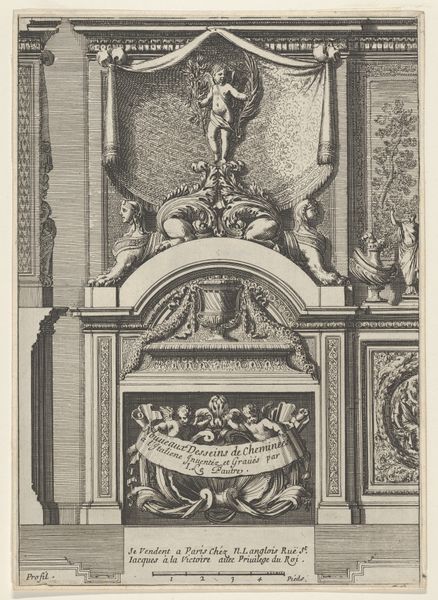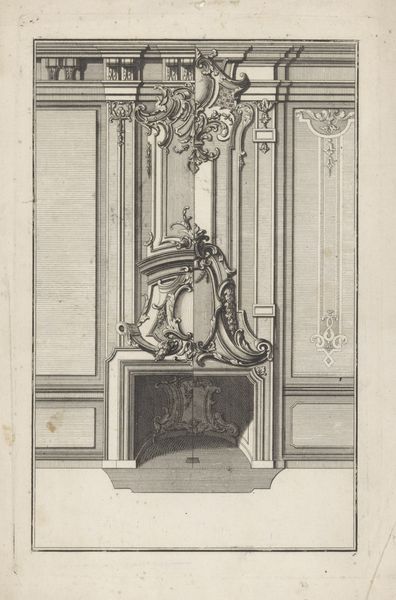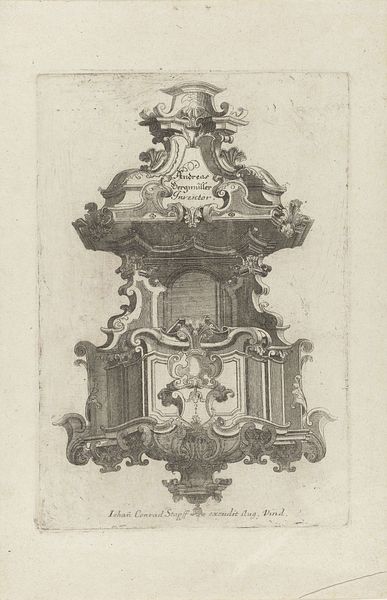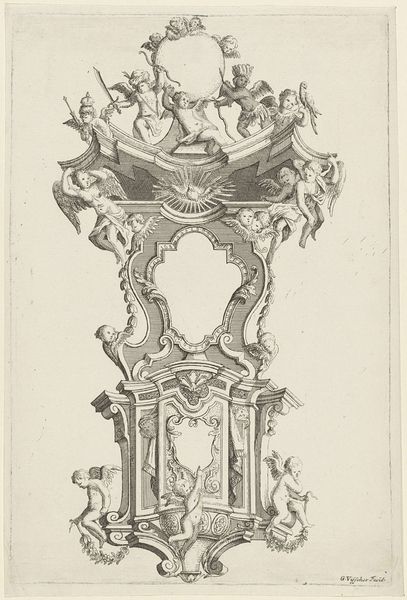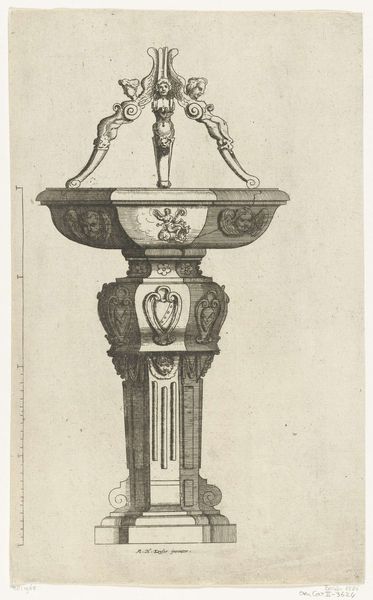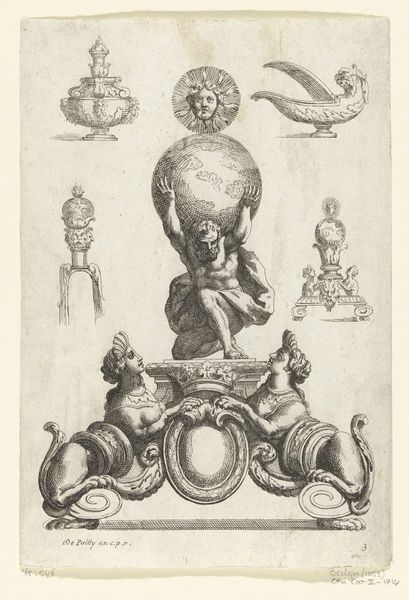
print, engraving
# print
#
old engraving style
#
form
#
geometric
#
line
#
northern-renaissance
#
decorative-art
#
engraving
Dimensions: height 206 mm, width 141 mm
Copyright: Rijks Museum: Open Domain
Curator: This is an engraving titled "Peper en zoutvat," or Pepper and Salt Container, created in 1563 by Johannes or Lucas van Doetechum. It's currently held at the Rijksmuseum. What's your immediate reaction? Editor: Stark. The lines are so precise it almost feels sterile, but there’s something inherently luxurious about the object itself. It seems like the visualization of power. Curator: The image feels designed to communicate opulence and refinement. The vessel becomes more than a utilitarian object. What can you unpack in that reading? Editor: Looking closer, it seems to almost foreshadow social stratification. Pepper and salt were historically luxury items, not accessible to all. A vessel as ornate as this would only be available to those in power, visually signifying that inequity and further codifying their place in the social hierarchy. Curator: Exactly. And consider the symbolism inherent in the materials the object could be made of—silver or gold, precious commodities. It emphasizes cultural memory of class, and reinforces power through display. This form transcends pure functionality to act as a signal of privilege. Editor: Yes, and the engraved decorations themselves! Those winged, mythical creatures look almost heraldic, further connecting the object to aristocratic imagery and lineage. This really becomes an assertion of control, even over something as quotidian as seasoning. Curator: Think also of the Renaissance interest in form and geometry. This container marries practicality with ideal forms. The decorative arts serve as microcosm of greater philosophical beliefs. The face embedded on the front feels particularly charged, its stare feels defiant. Editor: Defiant, yet somehow also subservient, as though its visual message only functions in support of the upper classes that such displays of grandeur served to uphold. It becomes difficult to separate this artistic display from its socio-historical message. Curator: So we have a detailed visual rendering of luxury, but also a symbol laden with historical weight. These visual objects preserve memories across centuries, they help reveal persistent cultural symbols. Editor: Indeed. By critically evaluating this artwork, we engage in vital work that makes possible broader dialogue, beyond the realm of formal qualities into cultural commentary.
Comments
No comments
Be the first to comment and join the conversation on the ultimate creative platform.
